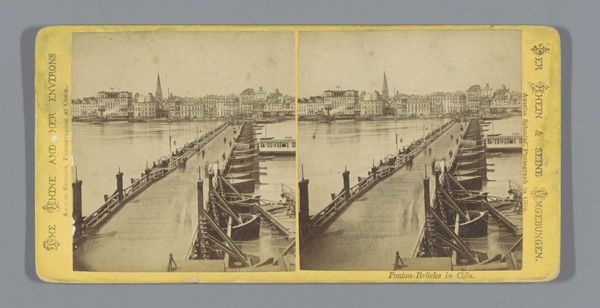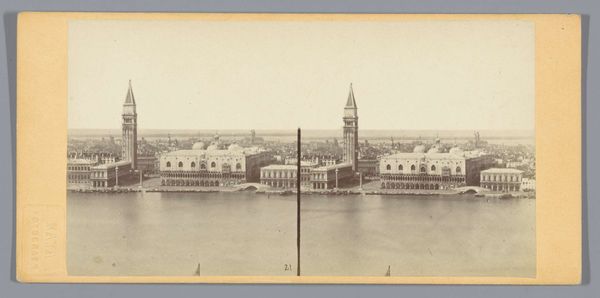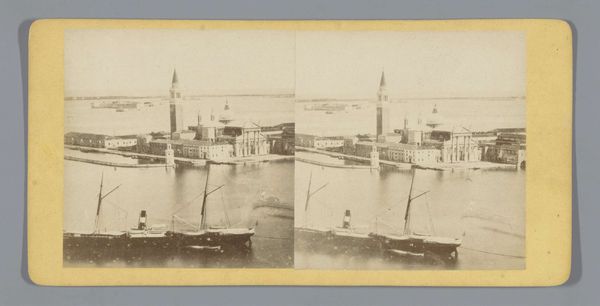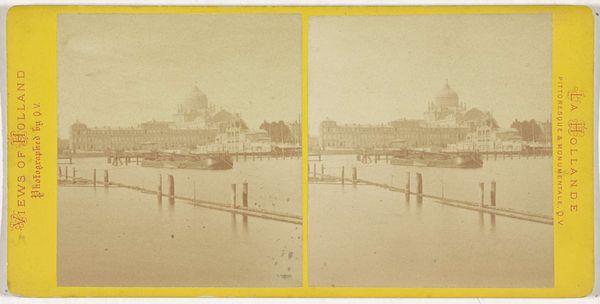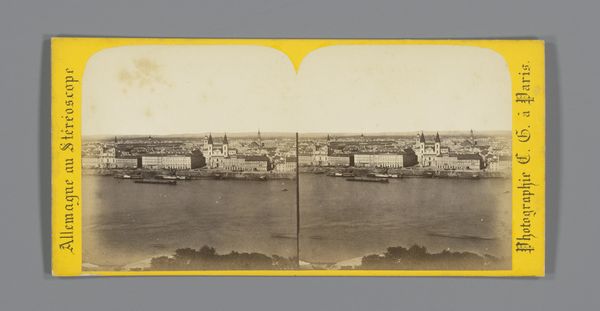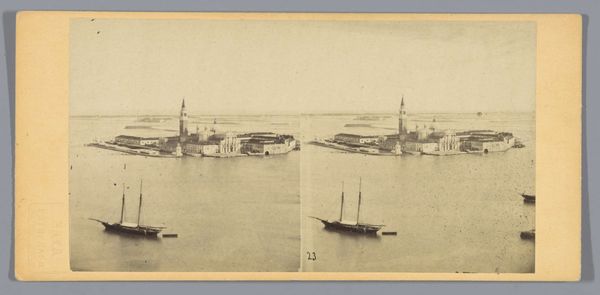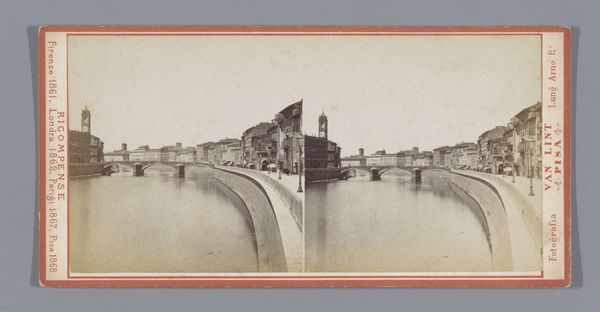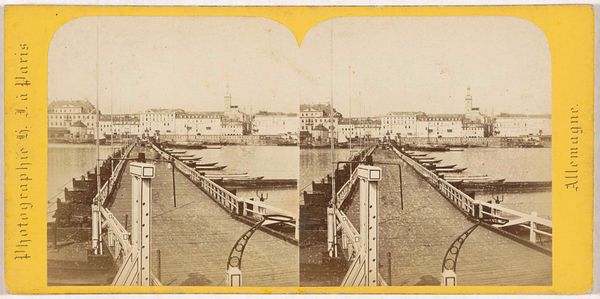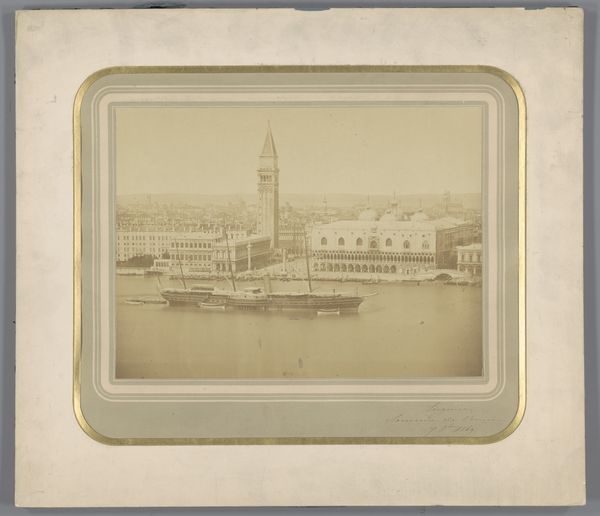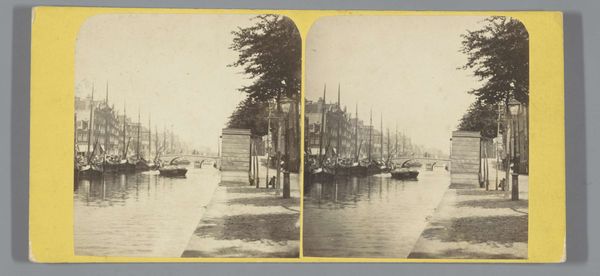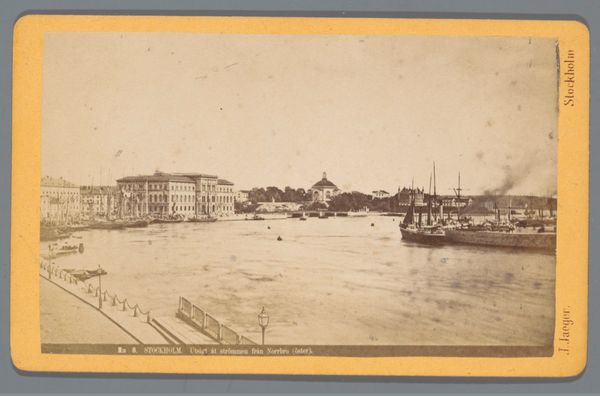
Dimensions: height 84 mm, width 177 mm
Copyright: Rijks Museum: Open Domain
Editor: So, this is Giorgio Sommer's "Gezicht op het Isola di San Giorgio Maggiore," taken sometime between 1860 and 1880. It's a photograph, and what strikes me is the almost surreal stillness of the water, which contrasts with the architectural grandeur of the island. How do you interpret the impact of photographic realism on depicting iconic landmarks like this? Curator: It’s crucial to understand how photography at this time was perceived. Far from being a simple act of documentation, it became a powerful tool in shaping perceptions of places and cultures. Sommer’s choice to photograph Venice this way - through pictorialism blending with a sort of documentary impulse - isn’t neutral. It plays into a rising interest in Venice, packaged and sold as part of an expanding tourist economy. The scale of such views being bought up helped influence a growing fascination. Editor: That makes sense. So it’s less about simply recording what's there, and more about creating an image that feeds into a particular narrative or a market? The perspective suggests the island almost floats independently of its connection. Curator: Exactly. Consider that this photograph was produced and circulated during a time of significant political and social change in Italy. Venice itself was experiencing this dramatic flux as an important port and cultural center. This picturesque framing is perhaps a conscious way of mitigating or masking deeper societal currents within the image itself. The commodification of Venice goes way back! This is more than simply documentary. Editor: It is! And considering photography's developing accessibility at the time, I guess this kind of image helped construct a certain "idea" of Venice that was consumed widely. It's making me re-evaluate assumptions on realist art. Thanks. Curator: Indeed. Seeing these landscapes through the lens of art history challenges a simplified idea of what photographs communicate, helping to see images critically as constructs loaded with ideological, historical context.
Comments
No comments
Be the first to comment and join the conversation on the ultimate creative platform.
